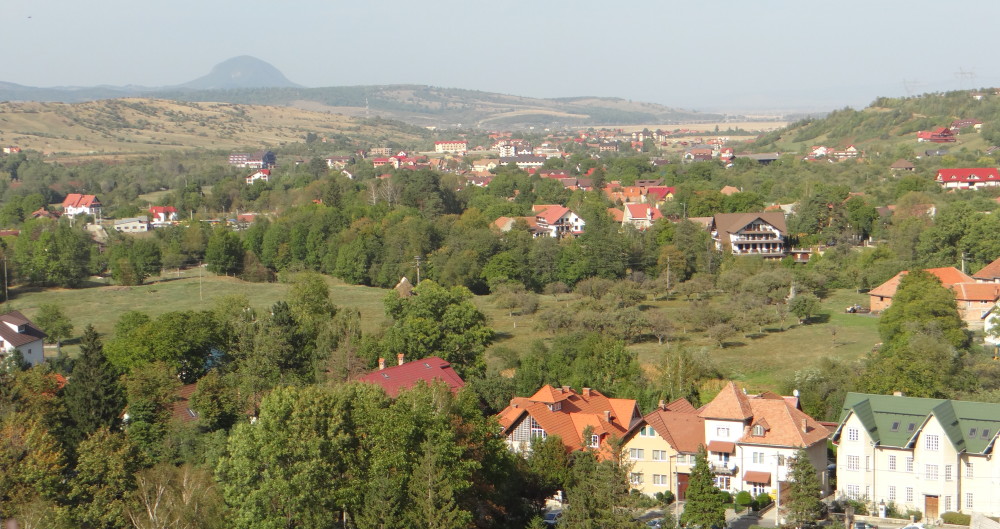 Photo: Wikipedia
Photo: Wikipedia
If you ask an engineer, he will tell you that CO2 is not a pollutant, and burning fossil fuels has made the Earth greener because their emissions are rapidly assimilated by sunlight. As Dr. Klaus Kaiser had explained, “incomplete combustion can cause air quality problems, not because of CO2 but due to soot particles and nitrogen oxides,” particularly in high density urban areas where the air tends to be stagnant. There is a reason why Chicago, the ‘Windy City,’ has not had an air quality problem.
The green biomass, including trees and plants, is 99 percent carbon and water. This carbon comes from atmospheric CO2, including CO2 dissolved in rain water or taken up by the oceans. “Higher atmospheric CO2 dramatically accelerates growth of green biomass above a minimum concentration of 200 parts per million (0.02%). Below that concentration (about 50 percent of CO2 level in the air today), it’s difficult for plants to keep growing.”
The carbon cycle/photosynthesis is a complex bio-energy process where solar energy is converted into green biomass. Almost all atmospheric CO2 comes from volcanoes, decaying biomass such as forests, oxidized by atmospheric oxygen, and then from forest fires and the burning of fossil fuels. When fossil fuels are burned, CO2 is released into the atmosphere and the carbon goes back into the carbon cycle, forcing the growth of new green biomass. It is a known fact that greenhouses add CO2 in order to accelerate plant growth. Somehow, the climate change industry proponents have calculated that the cost of a ton of carbon dioxide, the gas of plant life, to society is $38.
Solar and wind energy are excellent sources for powering low-power appliances during emergency conditions and for powering high-power appliances in remote locations. Marxist environmentalism has been used to advance the corrupt agenda of “climatism,” escalating in the war on coal which resulted in expensive electricity, hurting the poor and the middle class.
According to Jonathan Fahey, quoting a University of Chicago study released in June 23, 2015, installing new windows, replacing insulation, and making other home efficiency improvements fell 2.5 times short of the projected energy savings. Because the study looked at low income homes, a second study surveyed middle-income homes and the results were similar. http://econresearch.uchicago.edu/content/do-energy-efficiency-investments-deliver-evidence-weatherization-assistance-program
Making older homes more energy-efficient may not be the “cheapest way to reduce emissions of carbon dioxide.” Weatherizing and cash-for-caulking may not reduce energy use much either. “Steven Nadel, executive director of the American Council for an Energy-Efficient Economy, said that weatherization programs for low-income households are typically among the least cost-effective energy efficiency measures.” http://www.azcentral.com/story/money/2015/06/24/study-home-efficiency-upgrades-pay/29233141/
It is very expensive for low income homes to replace windows, water heaters, and air conditioners when they are still serviceable. Can you convince homeowners when your data is based on computer models that exaggerate the energy savings? It is much cheaper to fix a leak or replace a bulb.
According to the Plumberologist, a Virginia contractor service, starting in 2015 customers can no longer buy traditional electric water heaters like those they already own. What is available now is called heat pump technology. Your new water heaters “will have an AC unit on top that pulls heat from the air in the room to heat the water rather than producing all the heat by itself.”
As a former southern resident and owner of an AC heat pump, I can attest to my ten-year struggle with such an expensive unit that froze in summer time and never cooled my house adequately, and froze in winter time when it never warmed my house sufficiently. After ten years of so many repair calls that I lost count, I finally replaced the monstrosity with a much more efficient, less expensive, and traditional unit. And there was certainly no shortage of hot air in the atmosphere year round.
The Plumberologist identified several issues with these new heat pump water heaters:
– At 2 feet taller, they may not fit in older homes or condos where space is an issue
– The lightest units weigh at least 450 lbs., necessitating an extra person to install, doubling the service cost
– Because heat pump water heaters need several hundred cubic feet of warm air to work, homeowners will need more than a closet or small basement space to install one; and, wherever it is installed, “the room will be as cold as a freezer”
– Because you are buying now two appliances, a water heater and air conditioner, “heat pump heaters are twice as expensive” as the old electric water heater
Why is the EPA making homeowners buy appliances such as this heat pump water heater we do not need nor can afford, for paltry water heating efficiency in the months when we aren’t heating our homes, which for Virginians is about six months a year?
The Plumberologist suggested switching to a gas-powered water heater – if you can afford it. A tankless gas water heater is “up to 25 times more efficient than the most efficient electric water heater and, the unit pays for itself in less than 10 years.” http://plumberologist.com/electric-water-heater-replacement/
One way or another we’ll have to pay the EPA piper in order to reduce CO2 in the atmosphere that supposedly causes manufactured global warming. My plants are already suffering from the short and cooler summer. At least the EPA will let us have hot water.
ILEANA JOHNSON
American By Choice
